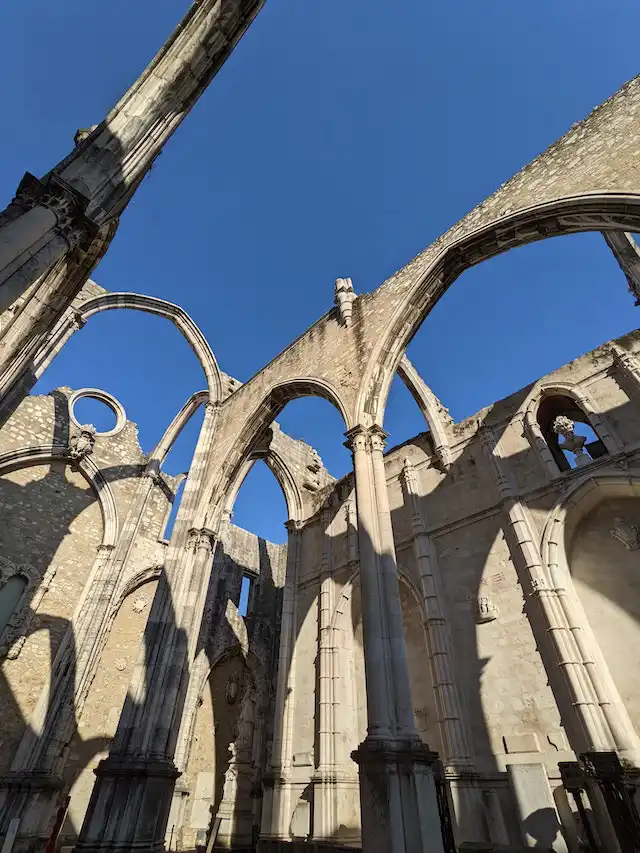Scary Facts About Portugal
Its Dia das Bruxas here in Portugal, for English speaking countries that is Halloween. Here are 10 Scary Facts About Portugal!
The Águas Livres Aqueduct Murderer
This famous landmark stands high over Lisbon and has been supplying the city with water since 1748. The aqueduct doesn’t look very chilling but dig into its history and a horrifying story comes to light. In the 1800s Lisbons serial-killer Diogo Alves made use of the aqueduct to hide and murder his victims. He killed a total of 76 people in 3 years of horror, in the cover of night he robbed and pushed them from the highest point, a chilling 65 metre high! In 1840, he was sentenced to death by hanging.
Spooky Cemetery
The Prazeres Cemetery is one of the oldest cemeteries in Lisbon, it provides a chilling introduction to Lisbon for visitors driving over the famous 25th April bridge. The cemetery was built in 1833 and boasts elaborate graves and tombs many with windows to provide a glimpse into afterlife, dare to visit?
Visitors and locals have shared tales of ghostly apparitions, mysterious sounds, and strange occurrences within the cemetery. Some have claimed to see shadowy figures moving among the graves, while others have reported hearing whispers or feeling an unexplainable chill in the air. Whether attributed to the atmosphere of the place or simply the product of vivid imaginations, the Prazeres Cemetery has become a source of chilling stories that add to its mystique.
It’s open everyday from 9:00am to 5:00pm and its free.
Initiation Wells at Quinta da Regaleira

This is probably the most well known fact about Portugal in our list of Scary Facts About Portugal!
The Initiation Wells are two wells within the grounds of Quinta da Regaleira in Sintra. These are no ordinary wells because they were never to be used as water, instead they were used for mystical and mythical ceremonial purposes.
The wells are connected by tunnels and other monuments around the park. The largest well has a 27 metre stair case leading down into the well scattered with small landings where, it is stated, that it is “reminiscent of the Divine Comedy by Dante and the nine circles of Hell, the nine sections of Purgatory and the nine skies which constitute Paradise.” At the bottom you can see a compass over a Knights Templar cross. Very little is known about the exact use of the wells but it is thought they were used for secretive initiation rites. Now that is scary s**t.
The legend of the “Cave of the Witches” in Portugal?

The legend goes as follows:
According to local folklore, the “Cave of the Witches” was a gathering place for witches and sorcerers during ancient times. It is said that these witches, often depicted as sinister and malevolent figures, would come to the cave to conduct their secret and mystical rituals, especially during the night.
The cave is believed to be a site where supernatural events took place. These events are often associated with the mysterious and eerie aspects of the cave, such as strange sounds, unexplained lights, and ghostly apparitions. Some people claim to have witnessed these supernatural occurrences.
The legend suggests that the witches who frequented the cave were involved in practicing dark magic, casting spells, and even placing curses on those who crossed them. These curses were said to bring misfortune to those affected.
The myth of the “Lobishomen“
Characterized as a man who has been cursed or transformed into a half-human, half-wolf figure, the Lobishomen is said to possess extraordinary physical strength and agility. Under the influence of the full moon, the curse is believed to take hold, leading the afflicted individual to change into a wolf-like form. This transformation is usually involuntary, and the Lobishomen loses control over its actions, often becoming a threat to both animals and humans.
The legend of the “Maria Sangrenta” (Bloody Mary)

The legend of “Maria Sangrenta,” which translates to “Bloody Mary” in Portuguese, is a haunting and eerie tale in Portuguese folklore. This legend is distinct from the more globally recognized “Bloody Mary” folklore.
In the Portuguese version of the legend, Maria Sangrenta is a female ghost or apparition that is said to appear when summoned, similar to the Western legend of Bloody Mary. To invoke her presence, one typically follows a ritual, which often involves standing in front of a mirror in a dimly lit room while reciting a specific chant or incantation.
The exact details of the ritual may vary, but common elements include saying “Maria Sangrenta” a certain number of times while looking into the mirror. The legend suggests that after completing the ritual, the ghostly figure of Maria Sangrenta will manifest in the mirror, and her appearance can be terrifying. It is believed that encountering her can bring bad luck, misfortune, or even danger to those who summon her.
The dark history associated with the “Convent of Our Lady of Mount Carmel”

The Convent of Our Lady of Mount Carmel served as the headquarters for the Portuguese Inquisition for several centuries. The Inquisition was a religious institution established by the Catholic Church to identify and suppress heresy. It became notorious for its harsh methods of investigation and punishment.
The dark history of the Convent of Our Lady of Mount Carmel is a reminder of the religious intolerance and persecution that occurred during the period of the Inquisition in Portugal and other parts of Europe. Today, the ruins of the Carmo Convent serve as a historical site and museum, where visitors can learn about this troubled past and the impact of religious persecution on society.
The “Capela dos Ossos”

The “Capela dos Ossos” was constructed in the 16th century, within the Church of St. Francis (Igreja de São Francisco) in Évora. It was built by Franciscan monks who wanted to convey a sobering message about the transitory nature of human life and the inevitability of death.
The interior of the chapel is adorned with the skeletal remains of approximately 5,000 individuals. The bones are arranged in intricate patterns, including geometric designs and religious symbols. The skulls and bones are carefully integrated into the architecture, including the ceiling, pillars, and walls.
Above the chapel entrance, a chilling inscription reads, “Nos ossos que aqui estamos pelos vossos esperamos,” which translates to “We bones that are here, for your bones, we wait.”
Probably the weirdest scary fact on our list of Scary Facts About Portugal
The legend of the “Comenda Palace” in Santarém?
Inês de Castro was a Galician noblewoman who arrived in Portugal in the 14th century. She came to serve as a lady-in-waiting to Princess Constance, the wife of Prince Pedro, who would later become King Pedro I of Portugal.
Inês and Prince Pedro fell deeply in love. Their love was forbidden due to Inês’s lower social status and the political alliances that Prince Pedro was meant to uphold. Despite the odds, they continued their relationship in secret.
King Afonso IV, Pedro’s father, was determined to end the relationship and ordered Inês to be assassinated in 1355. She was killed in the Quinta das Lágrimas (Estate of Tears) near Coimbra. Devastated by Inês’s murder, Pedro sought vengeance against those responsible. When he became King Pedro I, he captured and executed Inês’s murderers in a brutal act of vengeance.
Inês was exhumed, dressed in royal attire, and crowned as queen, even though she had never officially held that title in life. Her remains were placed in the Monastery of Alcobaça, where she was buried alongside Pedro. Their tombs are famous for the tragic love story they represent.
The tragic tale of Inês de Castro continues to be a poignant and well-known story in Portuguese history, evoking themes of forbidden love, power, and vengeance.
The “Cursed Villa” (Vila dos Pobres)
The village of “Vila dos Pobres” is said to have been abruptly abandoned by its inhabitants for reasons that remain shrouded in mystery. Some say that an unexplained catastrophe or a series of unfortunate events forced the villagers to flee.
The decaying houses in the village are believed to be haunted. Stories of ghostly apparitions, unexplained sounds, and eerie phenomena have contributed to the village’s reputation. It is said that anyone who enters the village may be afflicted by curses or experience a series of unfortunate events. Some legends claim that those who spend a night in the village will suffer bad luck.
Some stories suggest that a hidden treasure is buried in the village, but it is said to be cursed. Those who seek the treasure are said to face dire consequences.
Thanks for reading 10 Scary Facts About Portugal







